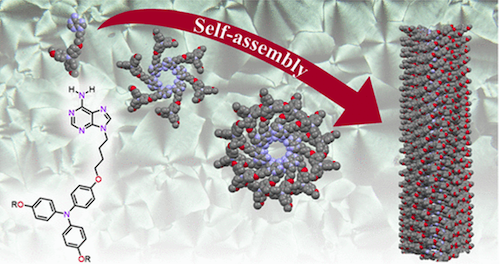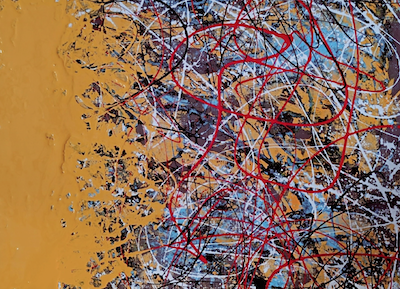Nueva química supramolecular con adenina, una de las bases nitrogenadas que forman parte del ADN y ARN
Investigadores del Grupo de Cristales Líquidos y Polímeros, del Instituto de Nanociencia y Materiales de Aragón (CSIC-UNIZAR) en colaboración con investigadores de la Universidad del País Vasco, la Universidad de Jaén y la Universidad de Calabria (Italia) han desvelado una nueva organización para las moléculas de adenina en forma de estructuras hexámeras cíclicas llamadas rosetas. Las rosetas a su vez se apilan formando columnas helicoidales que se organizan en fases hexagonales. Este hallazgo tiene gran interés para el desarrollo de nanoestructuras quirales y sistemas complejos que además pueden expresar otras funciones codificadas en las moléculas, simplemente por autoensamblaje de las mismas.
“Unveiling adenine H-bonded hexads: Hierarchical self-assembly for helical columnar functional materials”
Alejandro Martínez-Bueno, Génesis M. Valencia-Vásconez, Roberto Termine, Attilio Golemme, Josu Ortega, César L. Folcia, José M. Granadino-Roldán, Amparo Navarro, Raquel Giménez, Teresa Sierra
Accepted: 18th June 2025
DOI: https://doi.org/10.1021/jacsau.5c00256
Abstract:
This manuscript reports on an unusual self-assembly of small adenine-based molecules leading to complex, functional systems. Molecules feature an adenine nucleobase substituted at the N9 position with a triarylamine unit through a flexible spacer. Hydrogen bonding interactions prompt the formation of unprecedented adenine hexameric rosettes, which organize in dimers and then into helical columnar assemblies exhibiting hexagonal columnar liquid crystal phases, even with nonchiral molecules. Theoretical calculations including geometry optimization and prediction of vibrational modes have provided essential insight into the configuration of hydrogen bonds between adenine units to form stable hexads, and experimental and simulated X-ray diffraction (XRD) patterns are consistent with the unique helical self-assembly. Furthermore, molecular design including chirality in the flexible spacer and triarylamine electron-donor units steers these nanostructured materials toward functionalities related to the control of supramolecular chirality and semiconductivity. This is confirmed by thin film circular dichroism measurements for chirality and the space charge-limited current method for hole transport.











